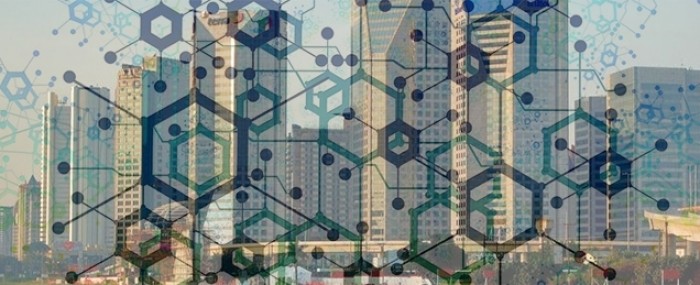
Planning of two innovation districts begins for São Paulo State
11 de dezembro de 2018By Elton Alisson | Agência FAPESP – In the years ahead, São Paulo State may acquire two innovation districts – geographic areas of well-established city neighborhoods in which clusters of companies, universities, research institutions, incubators and startups pursue creative and innovative ideas. Silicon Valley in California (USA) is a good example.
One of the districts will replace CEAGESP, a huge wholesale produce market in the west of the state capital. The other is to be set up on Fazenda Argentina, a 1.4 million sq. m. area in the municipality of Campinas purchased in 2014 by UNICAMP, the state university based in the city.
FAPESP is partnering with FIPE, an economics think tank, to develop conceptual and operational parameters for the establishment of these innovation and creativity environments in São Paulo and Campinas.
“FAPESP is committed to these initiatives, which will require the clustering in these areas of different government tiers, civil society actors, large corporations and startups. It will also be necessary to establish shared governance in order to assure time and stability for the projects to mature,” said FAPESP Vice President Eduardo Moacyr Krieger during an International Conference on Innovation Districts held in November 2018 at FAPESP.
The opportunity to create an innovation district where CEAGESP currently operates arose with the recent decision of the São Paulo State government to move the depot, announced in an “expression of public interest procedure” leading up to the establishment of a public-private partnership.
The City of São Paulo then launched a project to study options for use of the 650,000 sq. m. area currently occupied by CEAGESP and called on FAPESP to assist.
Because CEAGESP’s neighbors include the main campus of the University of São Paulo (USP), the Technological Research Institute (IPT) and Butantan Institute, the proposals include transforming the site into an innovation district.
“The project has an important legal dimension, besides its evident urban planning and economic aspects, in that it aims to lay the foundations for financing the innovation initiatives to be conducted in the area,” said Andrea Calabi, coordinator of the implementation of innovation and creativity environments in São Paulo State.
UNICAMP recently decided to transform Fazenda Argentina, part of the CIATEC high-tech park, into an international hub for sustainable development, and the City of Campinas has agreed to create an innovation district around the area. The project could be the seed of a smart city, according to Marco Aurélio Pinheiro Lima, UNICAMP’s executive director for integrated planning.
“The project has been submitted to FAPESP, which has agreed to help us operationalize it, since its implementation entails major challenges,” Lima said during the event.
FAPESP has invited FIPE to participate in the initiative by facilitating the development of legal, institutional, financial and urbanistic models for the innovation district projects on CEAGESP’s land and Fazenda Argentina.
“We know these are both long-term projects. Moving CEAGESP alone will take a considerable time to mature. The project needs a great deal of advance design and planning work,” said FAPESP CEO Carlos Américo Pacheco during the event.
Concentrated cities
According to Danilo Camargo Igliori, a professor at the University of São Paulo’s School of Economics, Administration and Accountancy (FEA-USP), there are more than 100 innovation districts worldwide, including Barcelona’s 22@ in Spain, Medellín’s Ruta N in Colombia, the Buenos Aires High-Tech District in Argentina, Toronto’s MaRS in Canada, and Recife’s Digital Port in Pernambuco, Brazil.
One thing all these innovation districts have in common is that their construction was made possible by government support and public-private partnerships (PPPs), according to Igliori.
“In some parts of the world, innovation districts have been created without public support, but it’s very rare,” he said. “We know that links between the public sector and private enterprise, and with universities and research institutions, are necessary to make these innovation environments work.”
Another feature shared by these innovation districts, Igliori added, is that they are “concentrated cities” in the sense that they cluster the formal and informal interactions that happen in the city, but in a smaller space and hence in a concentrated manner.
“The interactions that arise in innovation districts also occur in cities when they work well. The difference is that in an innovation district, these interactions are multiplied many times over,” he said.
The results of the interactions that happen in innovation districts end up crossing their borders and changing the environs, as evidenced by examples from around the world.
One of the world’s first innovation districts, alongside Boston’s, was 22@ in Barcelona. Unveiled in 2000, it transformed the El Poblenou industrial neighborhood into a thriving hub of innovation and creativity.
Known as “the Catalan Manchester”, El Poblenou began to decline in the early 1960s. Planning of an urban renewal project started in the 1990s, when much of Barcelona was redeveloped before and after the 1992 Summer Olympics. One idea was to convert El Poblenou into a residential neighborhood, but a group of intellectuals, economists and urbanists insisted on conserving its economic importance and productive character. The then mayor of Barcelona agreed and laid the foundations for its transformation from an obsolete manufacturing area to a knowledge economy hub.
“22@ represents an urbanistic, economic and social strategy,” said David Martínez García, Project Director for Barcelona City Council’s 22@ Committee, during the event.
“The idea was to attract high-tech companies and universities to El Poblenou in order to help introduce new economic activities based on the knowledge economy, which was unheard of in the 1990s.”
According to Garcia, 4,342 out of Barcelona’s 10,308 companies are located in 22@. The innovation district accounts for 51% of all the jobs in Barcelona and 52% of its revenue.
The project is currently being upgraded and has entered a new phase with the involvement of companies, universities, investors, government and the local community.
